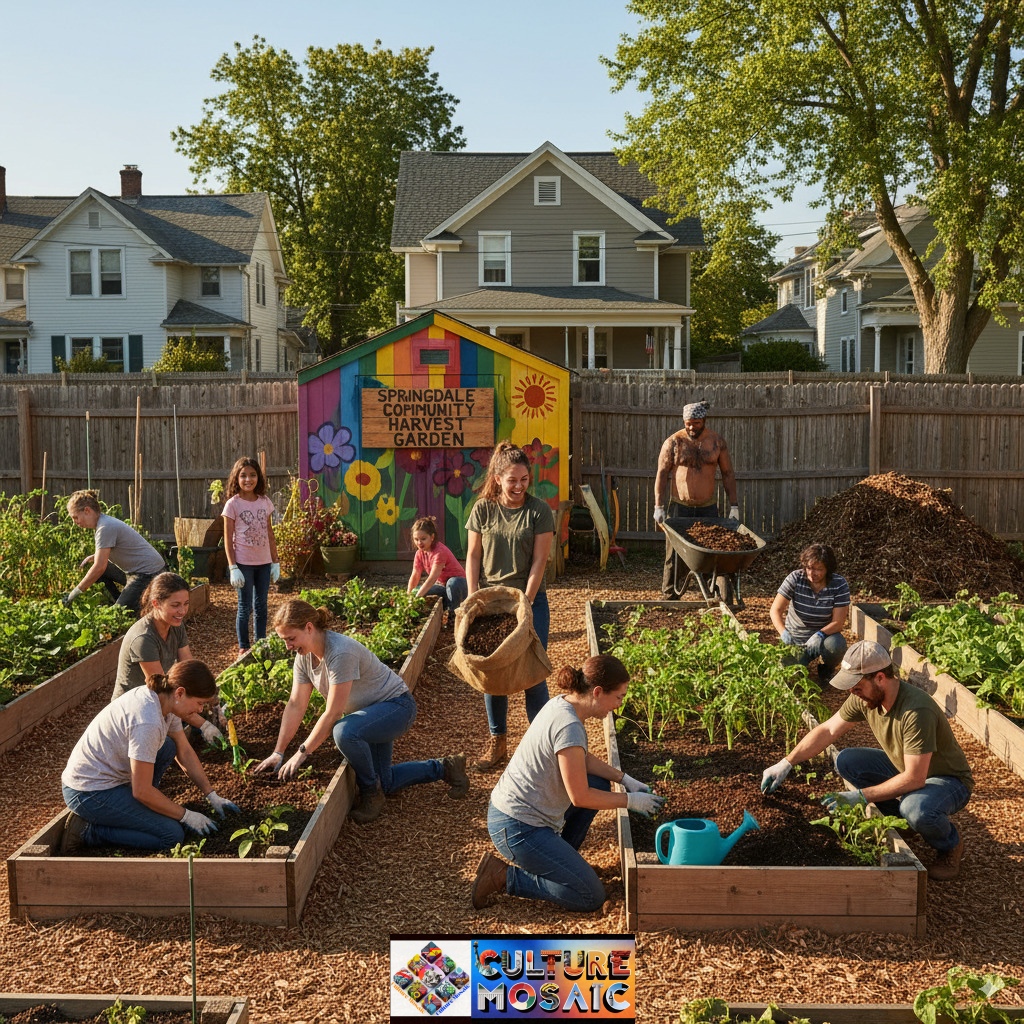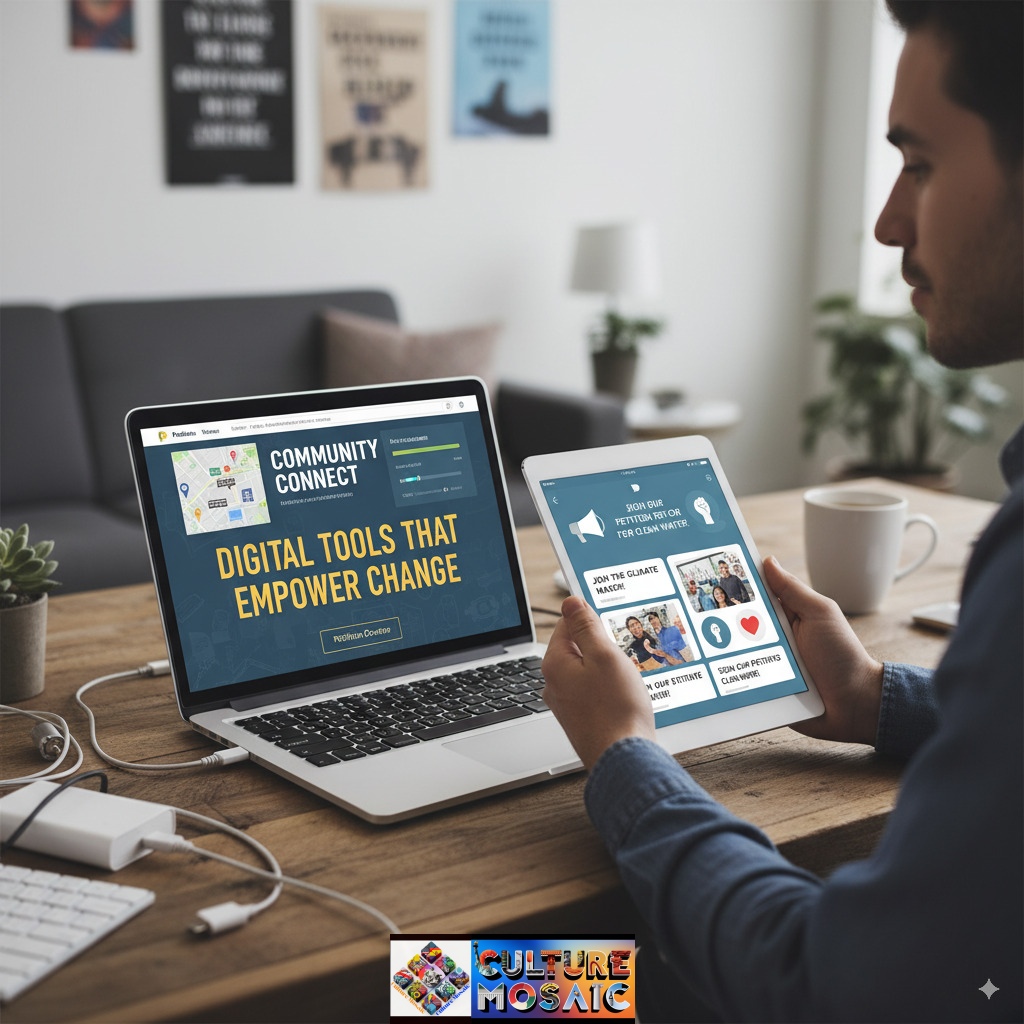Community Activism Strategies: You know, when you see something wrong in your neighborhood and think, “Someone should do something about it”? Well, here is the matter – that someone can be! Community activity is not only for professional protesters or politicians.
This is for regular people who take adequate care to take action. I should walk through all the things you need to know about community activism strategies that actually work. Think of it as your favorable roadmap to create a real difference where you live.
What is really community activism?
Community activism is basically people coming together to solve problems or bring positive changes to their local area. This can be anything by organizing a neighborhood cleaning at a dangerous intersection or installing a stop sign to fight for better schools.

The beauty of community activity is that it starts small and local. You are not trying to change the whole world throughout the night – you are focusing on its corner. And trust me, those small changes added some very amazing.
Why community activism works so well
Community Activism Strategies: What community activism here makes incredibly powerful:
People really hear when it is talking to their neighbor: When you contact your city council as a related resident instead of an outsider, you lift more weight. You vote there, you pay taxes there, your children go to school there.
You understand real problems: You live with these issues every day. You know which roads are flooded during heavy rains, which park requires better lighting, or where the pit is the worst.
You can gather quickly: Need signature for a petition? Your neighbors are there. Want to pack a town hall meeting? You know properly who cares about the same issue.

Essential community activism strategies that achieve results
Start with what you know
The most effective workers start with issues they understand deeply. Maybe you are disappointed with the school’s lunch program, or a dog owner is tired of the lack of safe running areas.
For example, take Sara from Portland. She started her activism journey as she was tired of dodging the pits on her daily commute. Instead of just complaining, he took pictures, researched the city’s road repair budget, and organized his neighbors. Six months later, he had a new pavement.
Community Activism Strategies: Build Your Network Step by Step
Community activism is definitely a team sport. You can’t do everything alone, and you shouldn’t try.
Start with your immediate circle:
- Family members who share your concerns
- Neighbors you already know
- Friends from work, gym, or hobbies
- Parents from your kids’ school
Then expand strategically:
- Join existing community groups
- Attend neighborhood association meetings
- Connect with local business owners
- Reach out to faith communities
The key is building genuine relationships, not just collecting names for your contact list.
Master the Art of Research
Community Activism Strategies: Before you start any campaign, you need to understand the landscape. This isn’t about becoming an expert overnight – it’s about getting smart about your issue.
Find out who makes the decisions. Is it the city council? School board? County commissioners? You can’t influence people if you don’t know who they are.
Understand the process. How are decisions made? When are the meetings held? What is the timeline for budget decisions?
Know your opponents and colleagues. Who benefits from the current situation? Who else wants to change? It is not about making enemies – it is about understanding the playground.
Community Activism Strategies: Choose your strategy wisely
Different conditions call for different approaches. Here are some proven strategies.
Petitions and letter-writing campaigns: do very good work to show wide community support. They are easy to provide people to organize and participate.
Participating in public meetings leads to your cause. When officials see real people affected by issues, they are difficult to ignore.
Organizing events like Town Hall or Community Forums makes it to dialogue and shows that you are serious about the solution, not only about complaints.
Media outreach increases your message. Local newspapers, radio stations and community blogs are often looking for stories about local issues.
Direct action such as peaceful protests or demonstrations can be effective, but time and tone matters a lot.
Communicate like a supporter
Community Activism Strategies: Your message should be crystal clear, compelling, and effortless to understand. Forget the jargon and complex explanations – talk like you are explaining this issue to your neighbor on the fence.
Pay attention to the solution, not only problems: Instead of “Park is terrible,” Try “we want to install new playground equipment and improve lighting to make the park safe for families.”
Use stories and examples: “Mrs. Johnson fell on the broken pavement and broke her hip is more powerful than” the pavement maintenance is inadequate “.
Be specific about what you want: Do not just say “improve schools”. Say “Hire two additional crossing guards and install speed bumps on school street.”
Community Activism Strategies: Build a final alliance
The strongest community activity occurs when different groups work together. If you are concerned about both flood issues, your environmental group can meet with the local trade association.
Look for normal land with groups that may look different from you. Both the groups of parents and the organization of the seniors want better pavement for different reasons.
Digital devices that make activism easier

Technology can supercharges your community activity efforts:
Social media platforms like Facebook Group and Nexador help you connect with neighbors and quickly share updates.
Online petitions such as Change.org make it easy to collect platform signature and track support.
Event organizing tools such as meat -up or Facebook event help you coordinate meetings and activities.
Communication apps like WhatsApp or Slack should keep your core team connected and organized.
Crowdfunding platforms can help raise money for your reason if necessary.
But remember – digital tools should increase real -world relationships, not to replace them.
Overcoming Common Challenges
Every activist faces obstacles. Identify their needs, interests, and level of knowledge about the topic.
“Nobody cares” syndrome: Start Small. Even if only five people show for your first meeting, it is five more than you before. Success creates speed.
Dealing of protest: Be respectable and focus on facts. You do not have to convince everyone, just enough people to make changes.
Burnout: Activity is a marathon, not sprint. Take a break, celebrate small winning, and remember that permanent changes take time.
Limited resources: You do not require a large budget to create an impact. Creativity and perseverance often matters more than money.
Community Activism Strategies: Measure your success
How will you know that your activism is working? Success for every campaign looks different:
- Immediate win: installing that stop sign installed or pits filled.
- Policy change: new ordinance or revised rules.
- Increase in awareness: more people are talking about your issue.
- Increasing participation: Your meetings grow up over time.
- Long-term effects: permanent changes to improve community life.
Do not consider the value of small victory to be less. They enable reliability and speed to tackle major challenges.
Building continuous change


The most successful community workers think of long sports. How do you ensure that positive changes are stick around?
Create ongoing structures. Form Committee or Working Group which can continue work even when the major people go away.
Develop new leaders. Traine others to take responsibilities so that everything does not depend on one person.
Stay with the decision makers. Make connections with elected officials and city employees who are beyond your specific issue.
Documentation of your successes. Future workers can learn from your experience, keep records.
Real-world examples that inspire
I share some examples of community activism that started small but create permanent changes:
The Nebarud Garden Project: A group of residents of the apartment in Detroit vacated a lot in community gardens. He started by cleaning a small space, then gradually expanded. They now have a network of gardens that provide fresh food and bring neighbors together.
Safe route for school: A California was organized to make school safe in the parents suburbs in California. He worked with city planners to connect the crosswalk, assured the school district to accommodate the Start Times, and recruiting Swayamsevak Crossing Guards. Childhood obesity rate in his area was reduced significantly.
The WiFi Warriors: When a rural community could not get reliable internet service, the residents did not just complain to the phone company. He researched the municipal broadband options, participated in county meetings, and eventually assured the local government to invest in the community -owned internet infrastructure.
Start: Your first step
Are you ready to jump in? Here’s how to start:
- Identify your issue. Do you bother the most about your community? Start there.
- Do some basic research. Who else cares about this? Who has the power to fix it?
- Talk to your neighbors. Find out if others share your concerns.
- Participate in a local government meeting. See how decisions are found in your community.
- Join with existing groups. You do not need to strengthen the wheel.
- start small. Choose a specific, obtainable goal for your first campaign.
Remember, every successful worker started properly where you are now – seeing a problem and deciding to do something about it.
FAQs About Community Activism Strategies
How much time does community activity actually take?
It completely depends on the level of your participation and the scope of your issue. You can spend a few hours a month to attend the meeting and stay informed, or you can dedicate several hours a week to organize and promotion.
The beauty of community activism is that whatever time you have, you can contribute. Even busy people can make a difference from signing petitions, sharing information on social media, or attending a topical meeting. As you include more and see the results, you can choose to invest more time.
Most successful community workers recommend starting small – perhaps one evening in a month – and increasing your participation because your schedule allows and your passion increases.
Do I need special skills or experience to become a community worker?
Absolutely not! The most important qualifications are careful about your community and are ready to take action. As soon as you go, you will learn everything.
He said, some skills may be helpful: basic communication capabilities, some comfort with public speaking, organizational skills, or experience with social media. But here is the key – you do not need to do all these skills yourself. Effective activation is teamwork, so you can partner with those who have complementary capabilities.
Many successful activists started without any experience. He learned, made mistakes, and got better over time. Your passion and perseverance matters a lot more than your resume.
What if I am shy or do not like to speak public?
They show that being introverted or shy does not disqualify you from taking action. There are many important roles that do not need to be the face of a campaign.
You can excel in research, writing, social media management, event planning, or one conversation with neighbors. Many effective workers work behind the curtains, who support public speaking people.
If you want to work on your public speaking skills, community activism is actually a great place to practice. Start by talking in small neighborhood meetings where you know people, then slowly do your work to big places. Most people are surprisingly helpful when you are advocating something that they also care.
How do I handle disagreement and struggle in activism?
Conflict in community activism is unavoidable because you are working with issues that people care deeply. The key is creatively learning to handle disagreement.
Pay attention to issues, not personality. Understanding, not just to answer. Look for common land with people who disagree with you. Sometimes your opponents have valid concerns that you can address in your solutions.
Be respectable and professional in public settings, especially in public settings. Anger or personal is usually a backfire and damages your credibility. Remember that today’s opponent may be a partner of tomorrow on a different issue.
It also helps in keeping thick skin and not taking disagreement individually. People are not rejecting you as a person – they disagree with your situation on an issue.
How long does it take to see the results from community activism?
This varies dramatically depending on this issue and level of change you want. Simple problems with a clear solution can be solved in a few months. Complex issues related to policy change or important money can take years.
Some quick victories that you can see include: a pit filled (from weeks from weeks), adding a stop sign (several months), or organizing a community cleaning (immediate satisfaction, ongoing effects).
Large challenges such as changing zoning laws, improving school funding, or addressing systemic problems usually takes 1-3 years or more. Keeping an eye on the big goal, the key is celebrating a small victory on the way.
Do not discourage if progress seems slow. Remember that you are often changing the systems and approaches that have been for years or decades. Sustainable change takes time, but it is worth effort.

